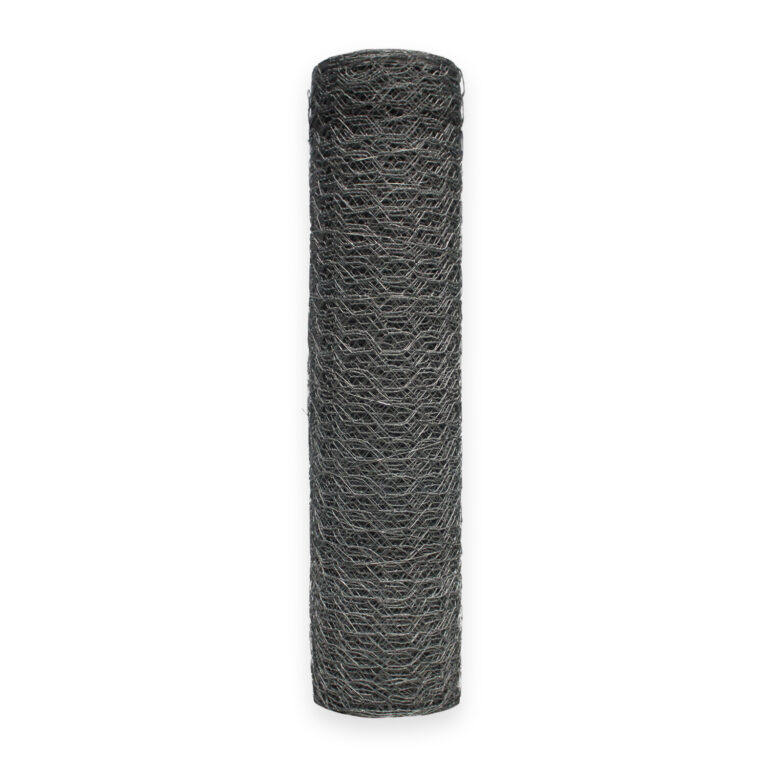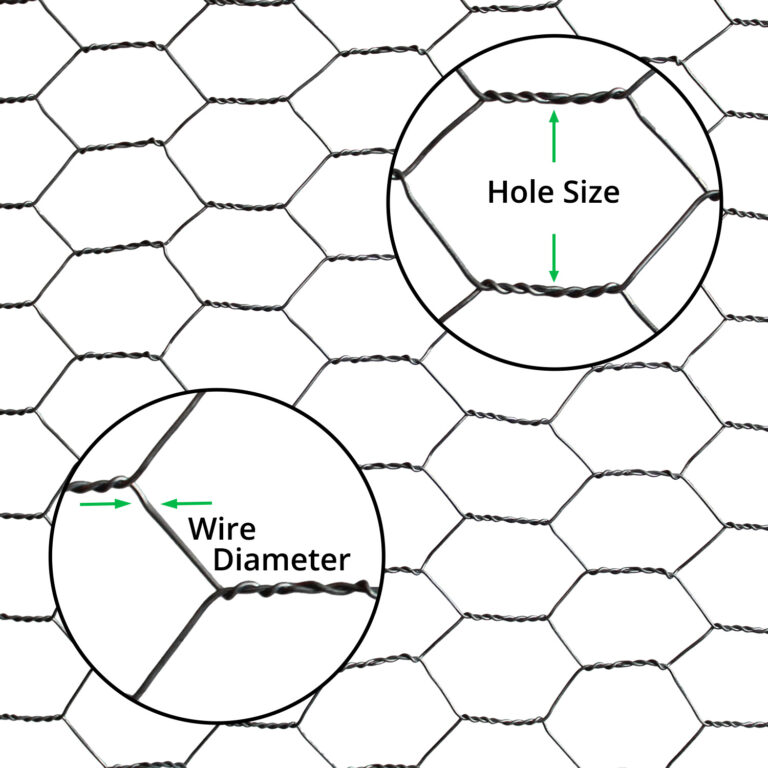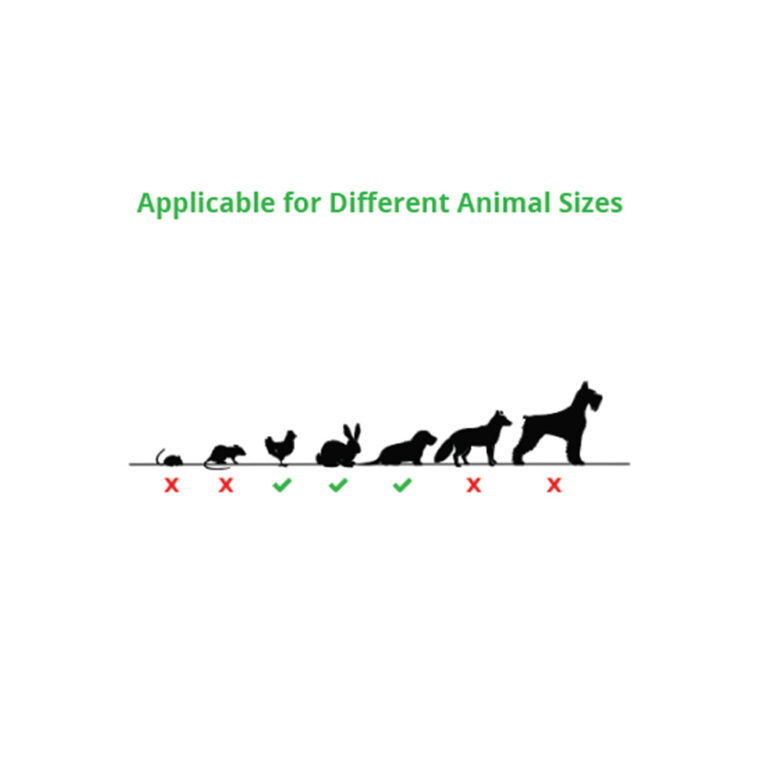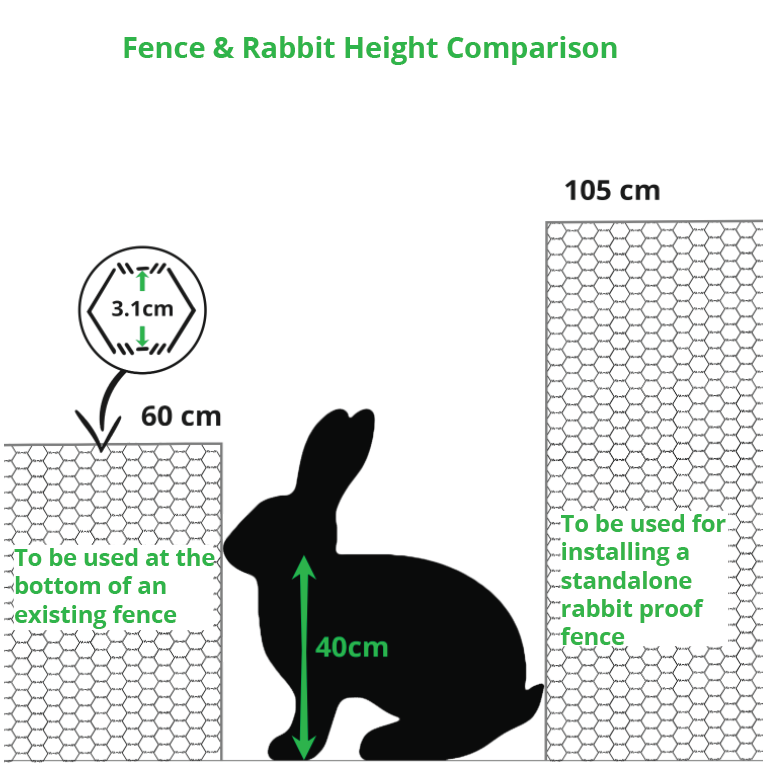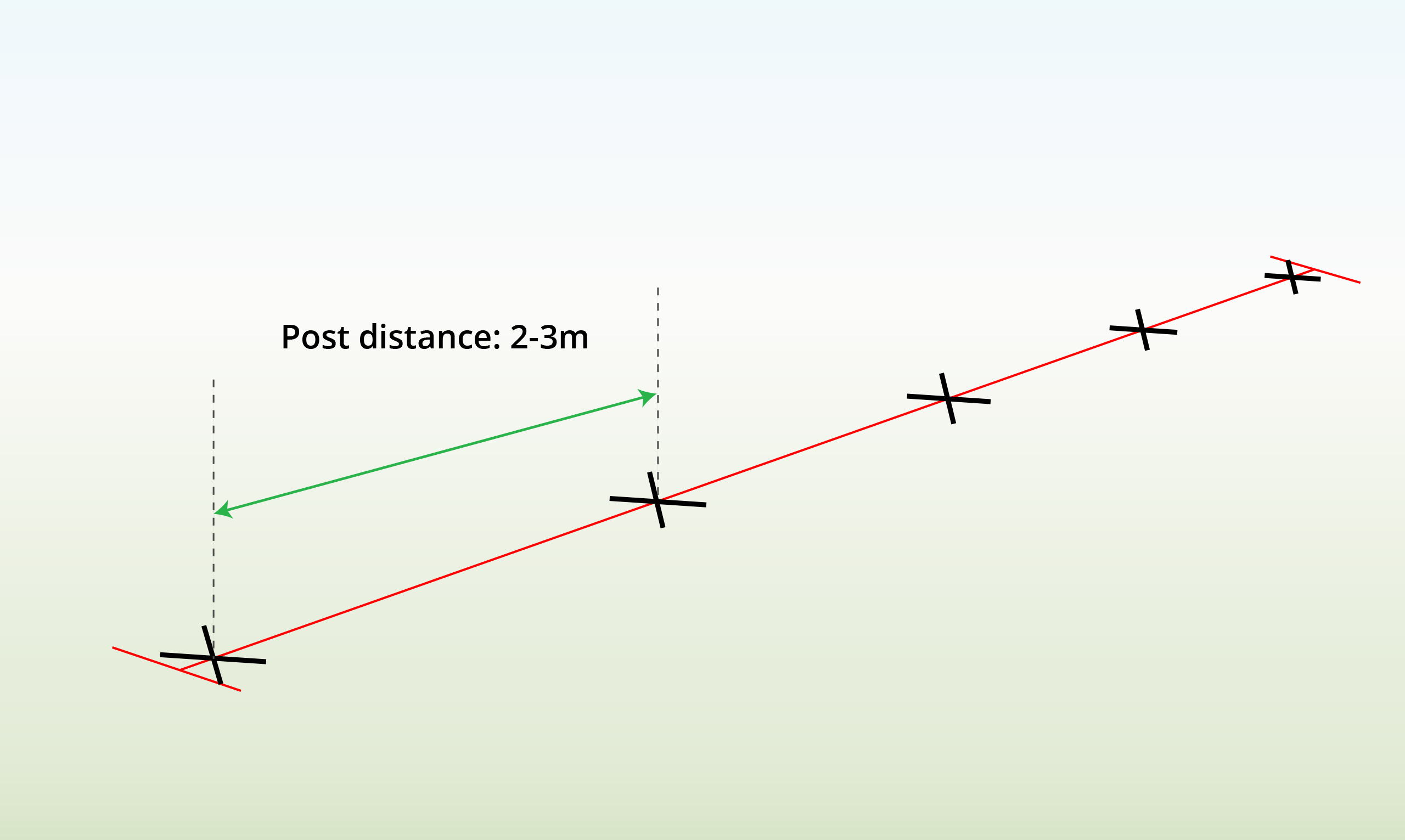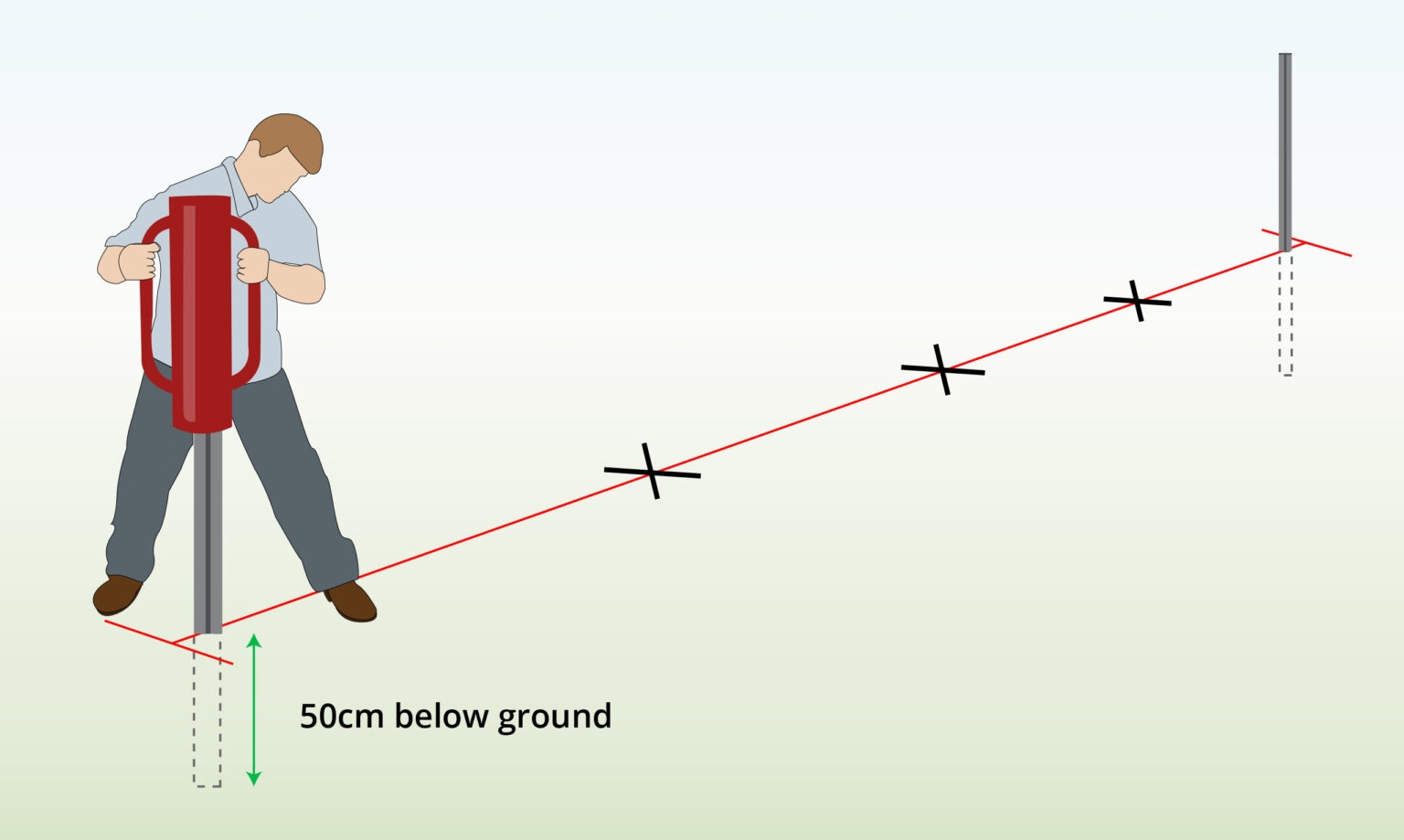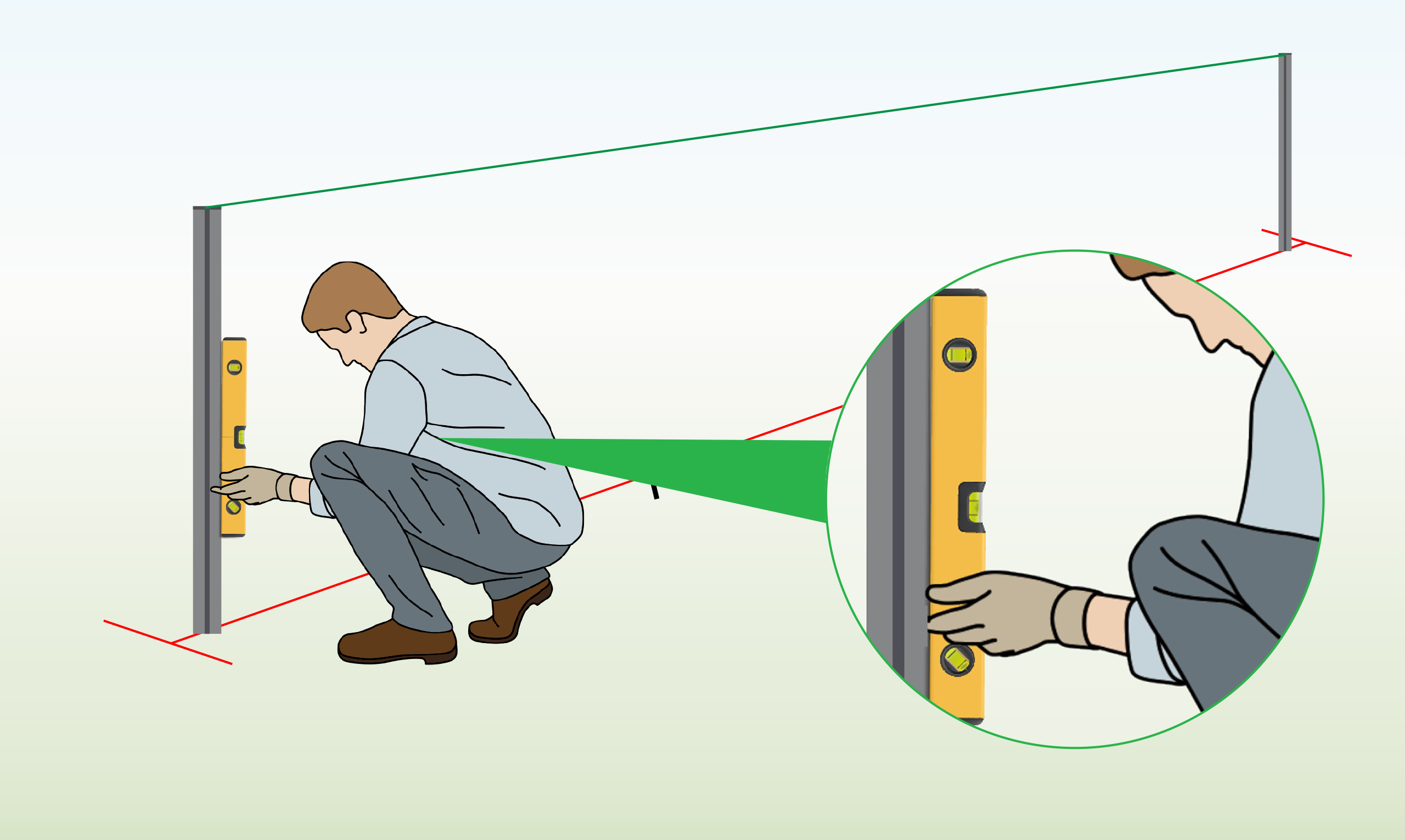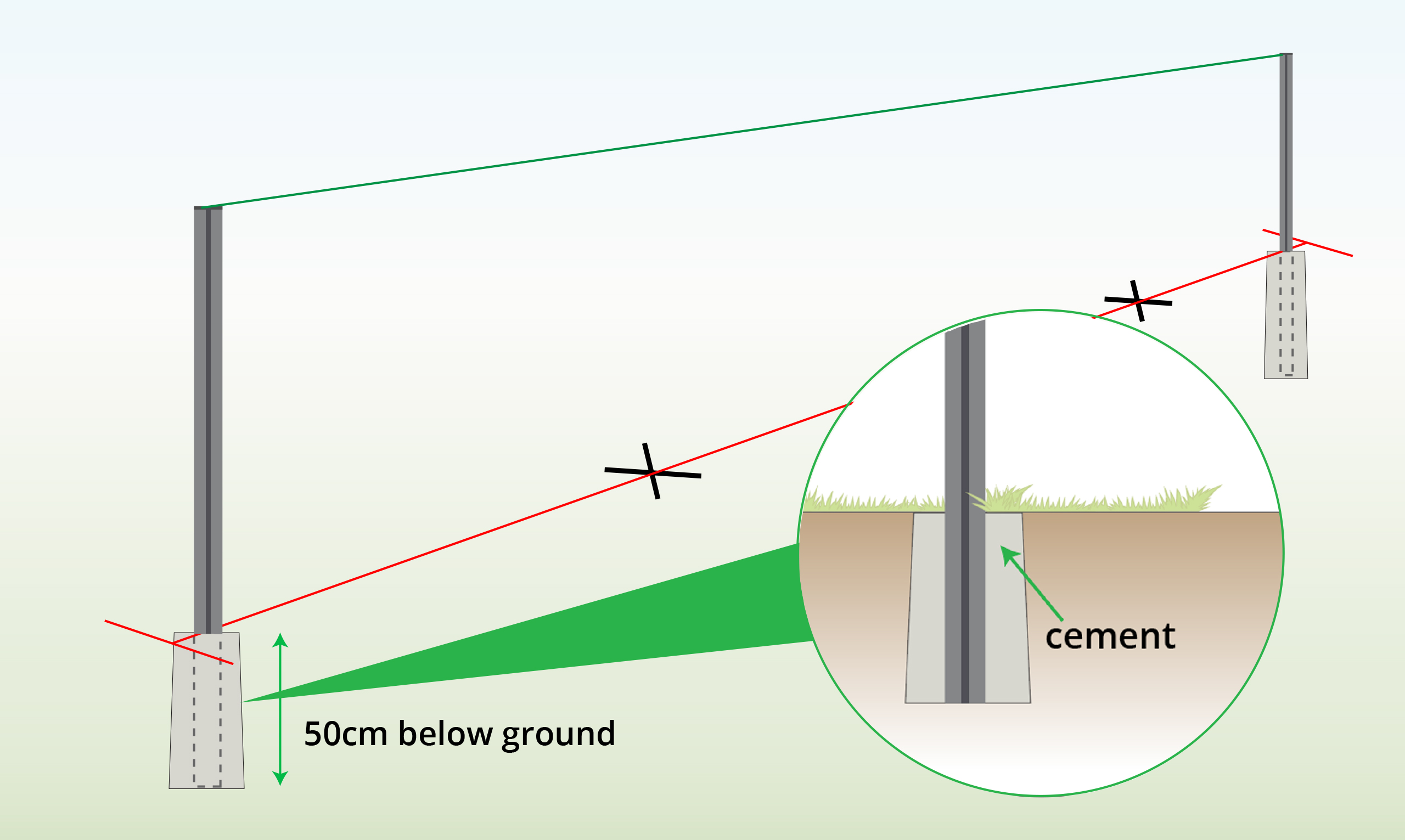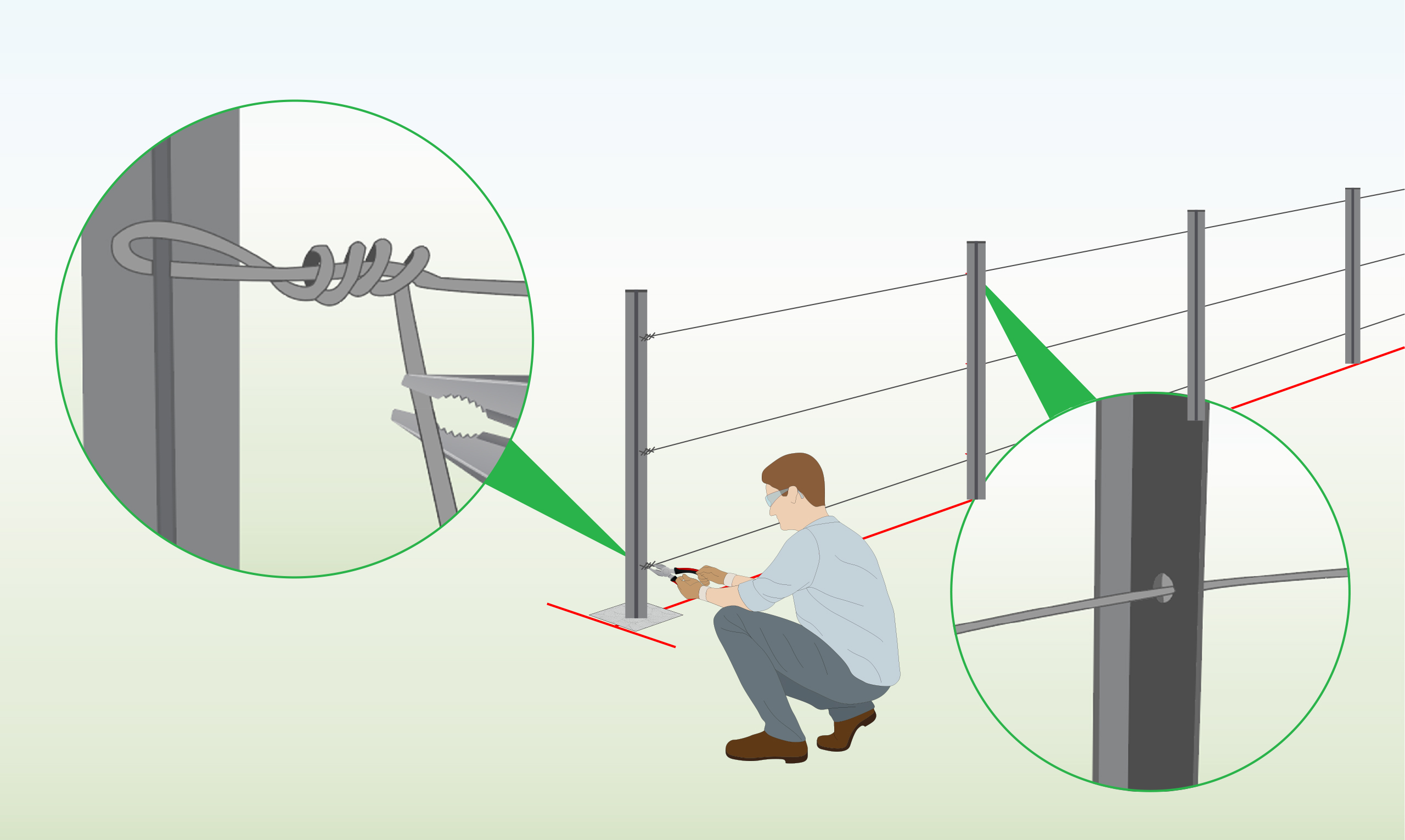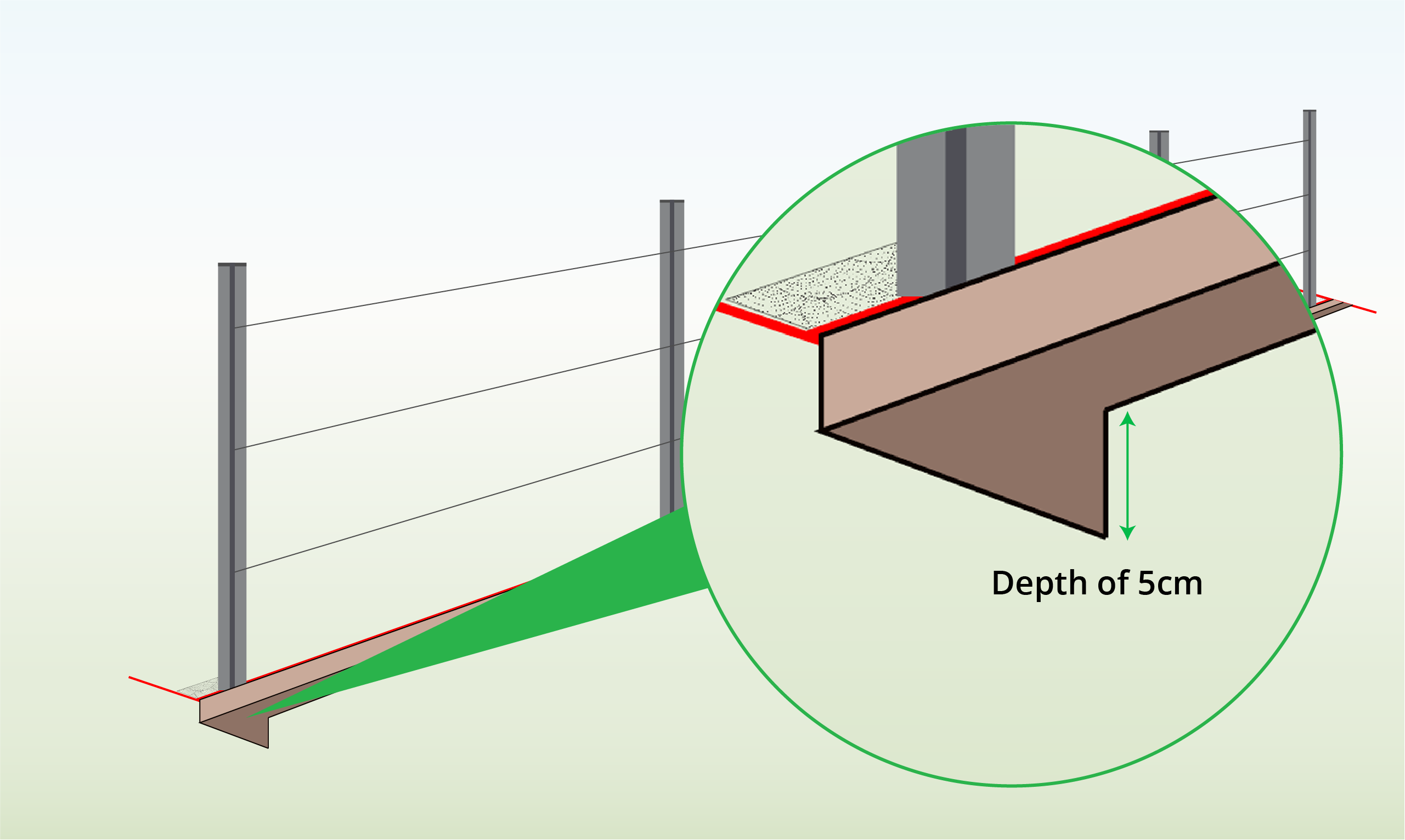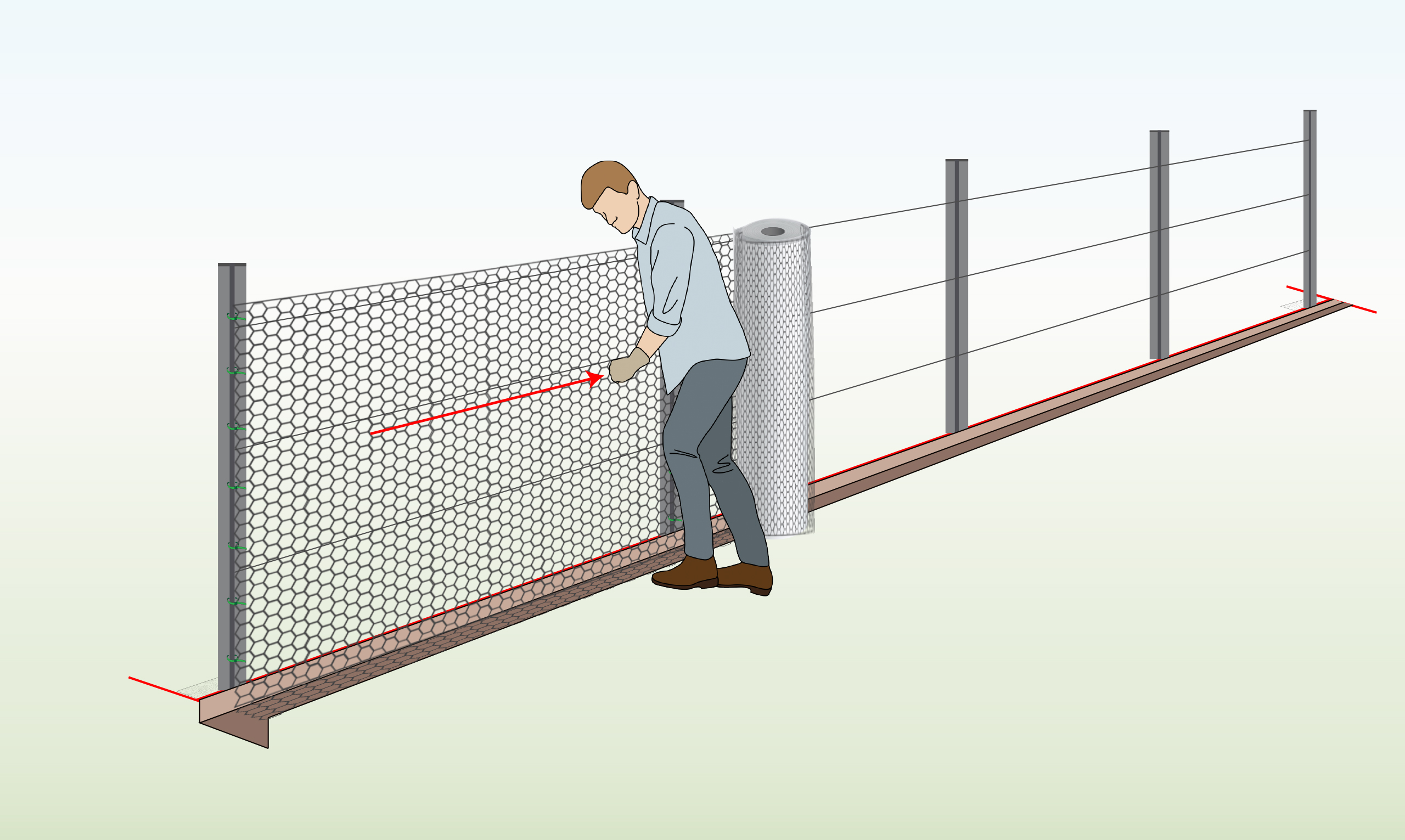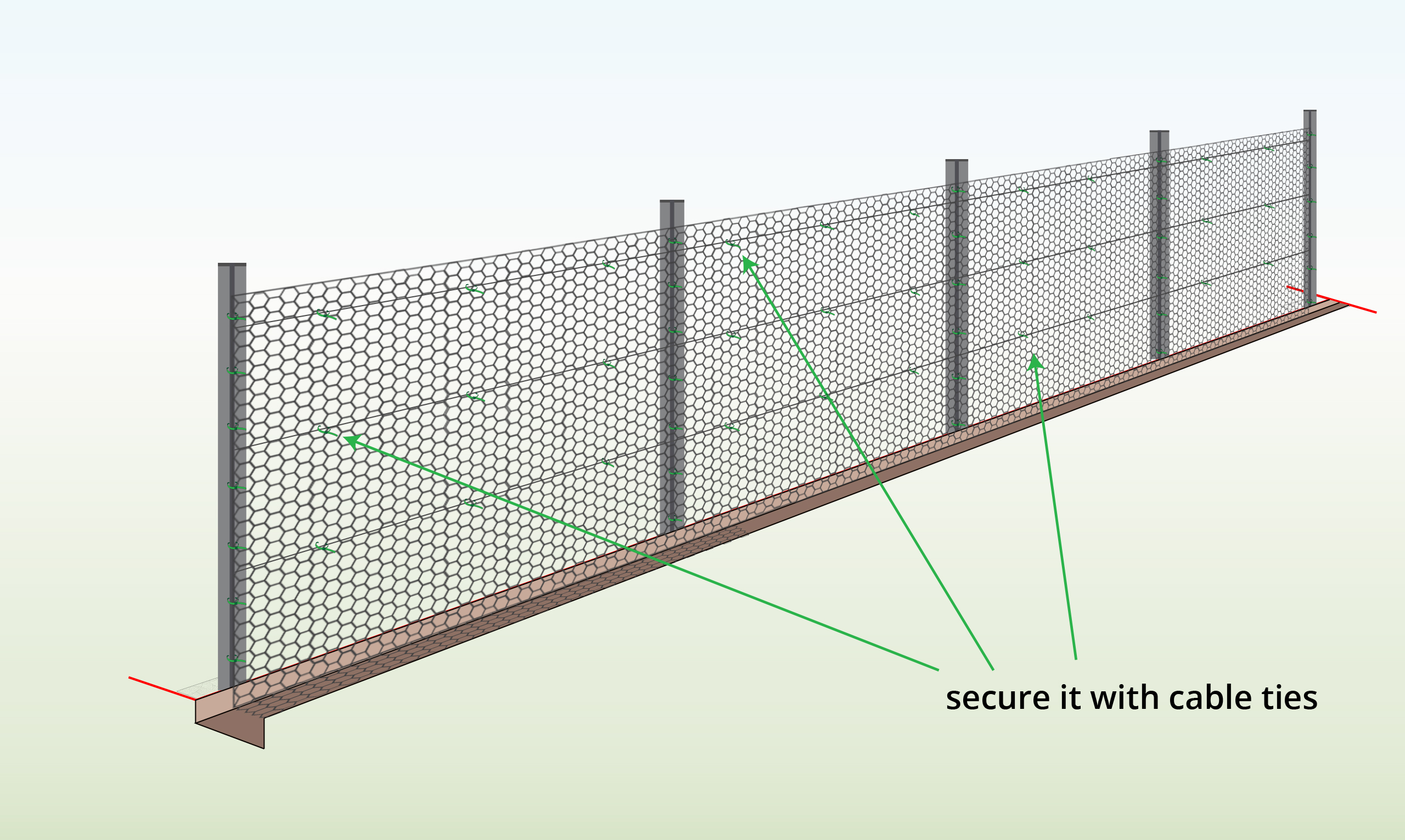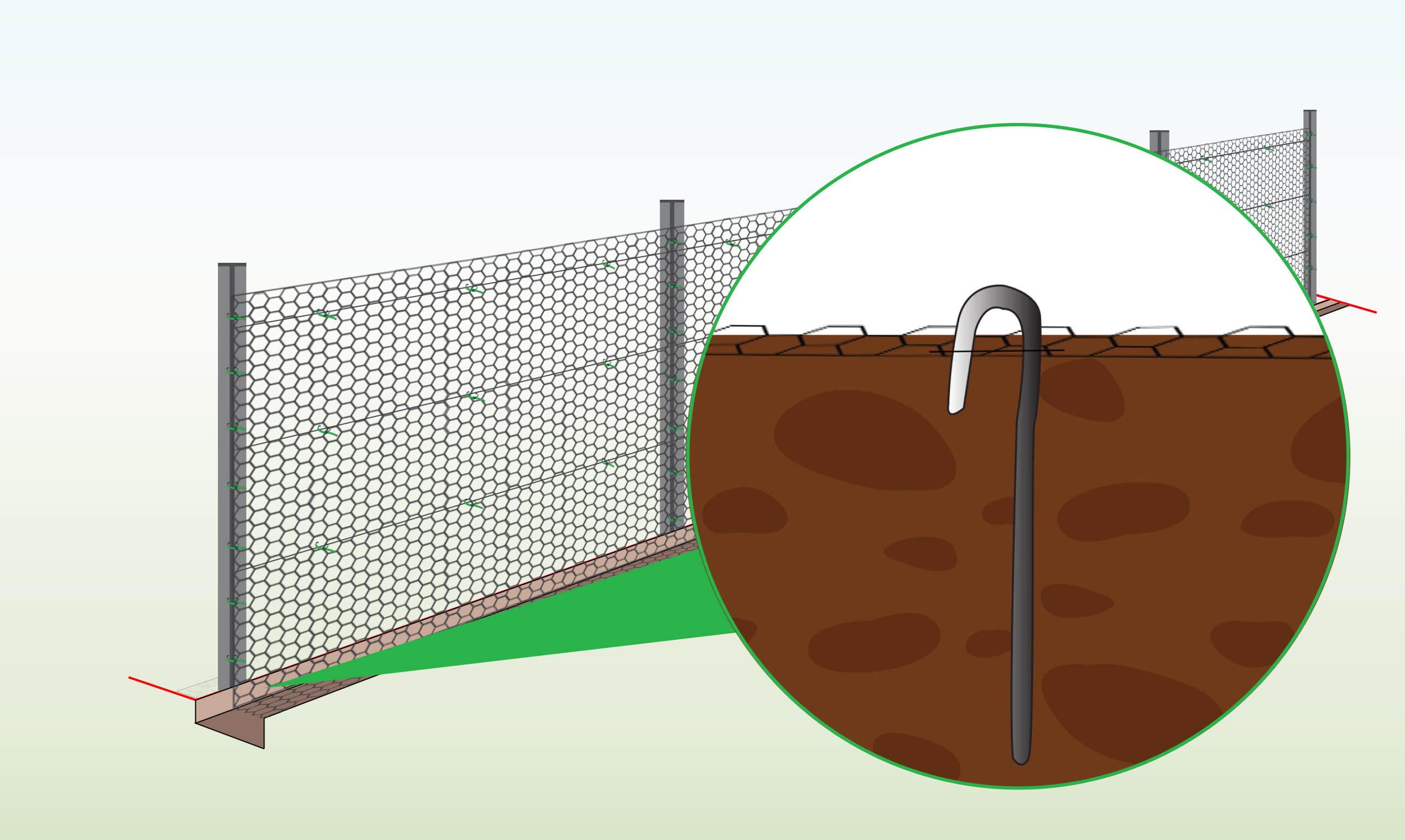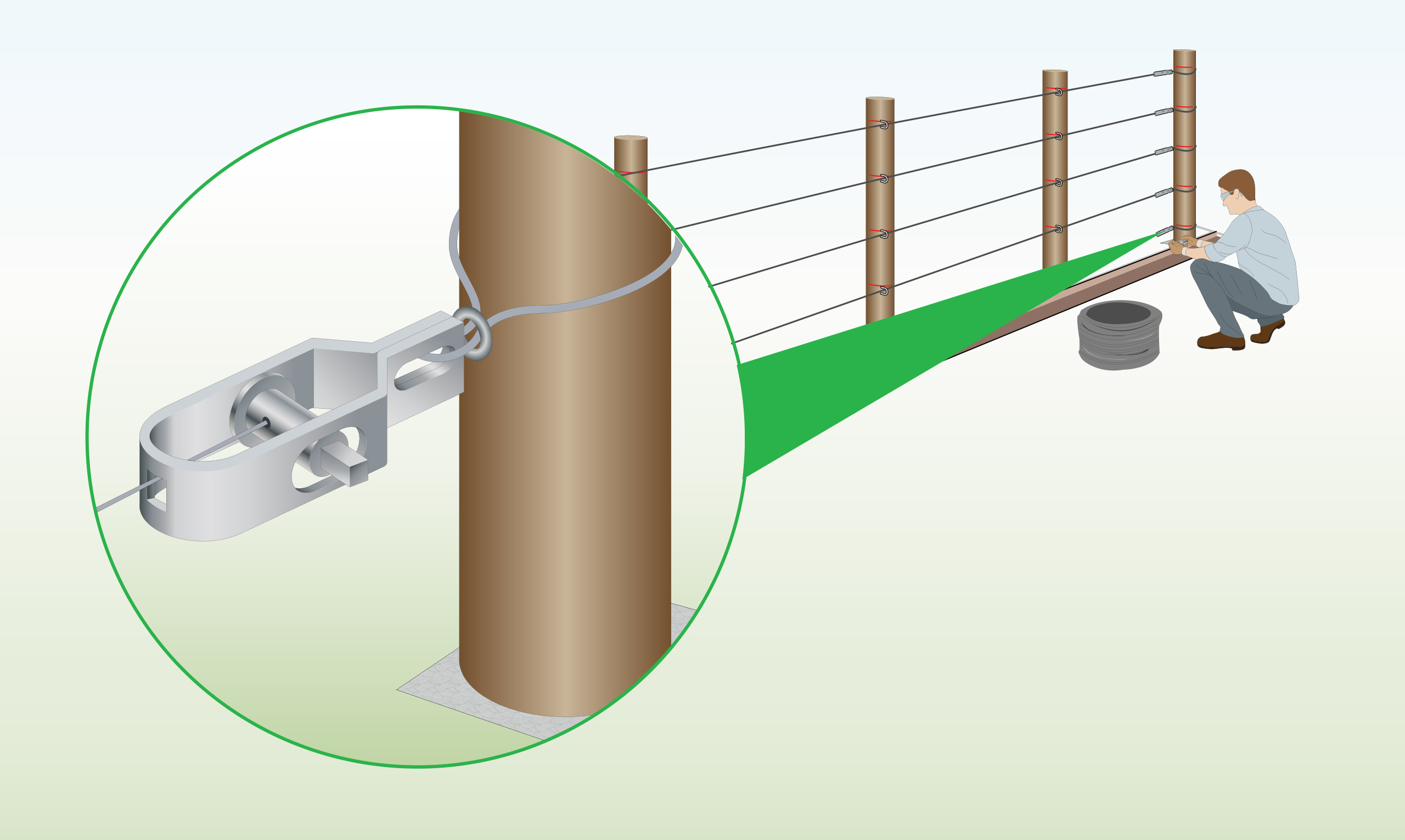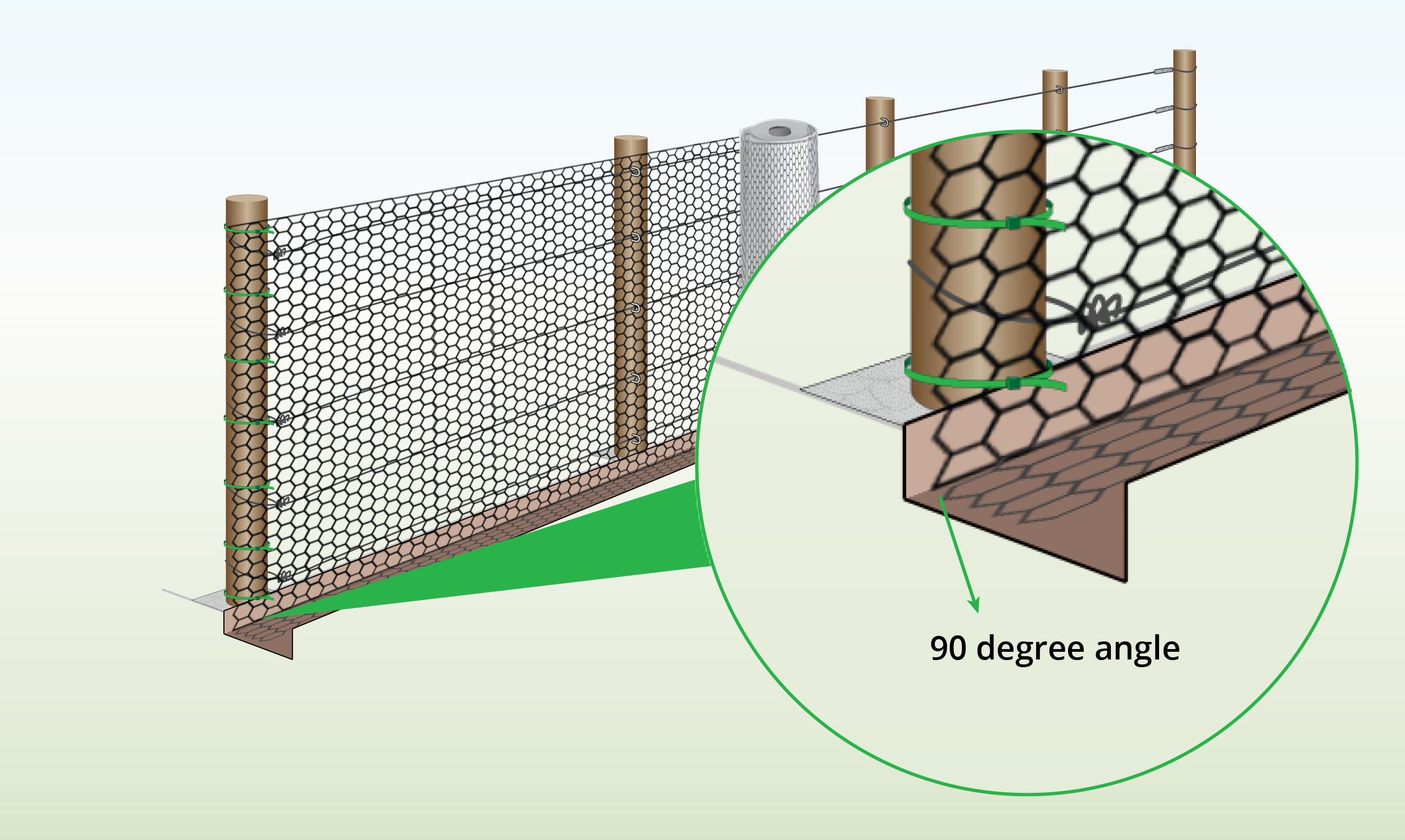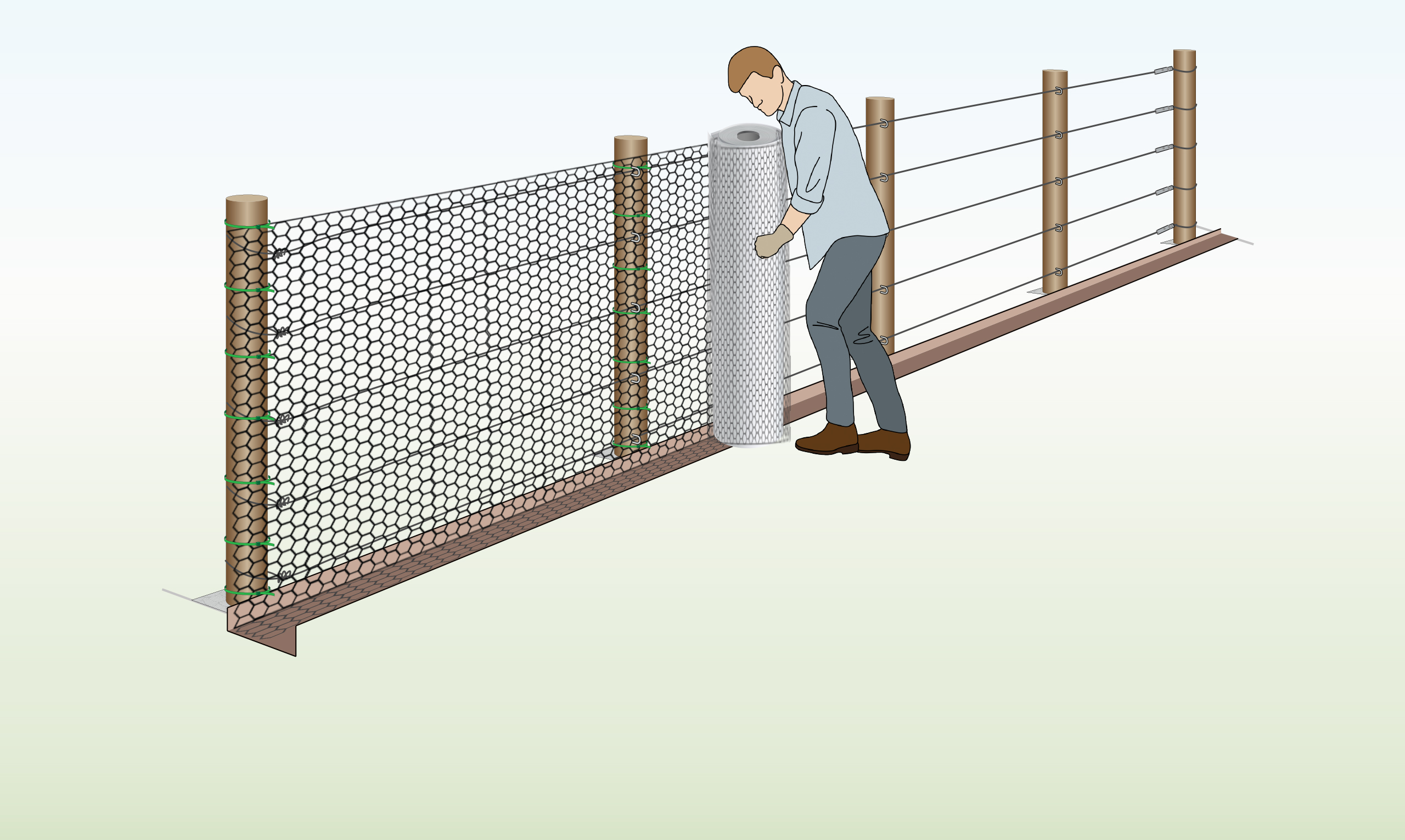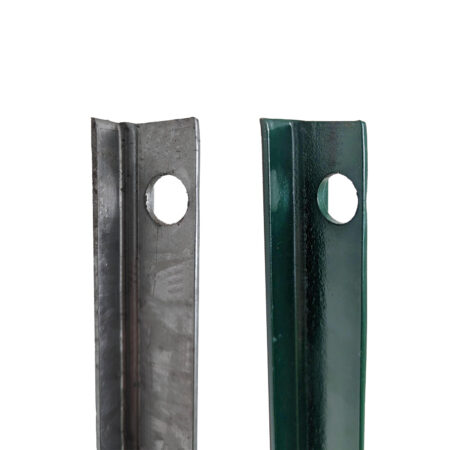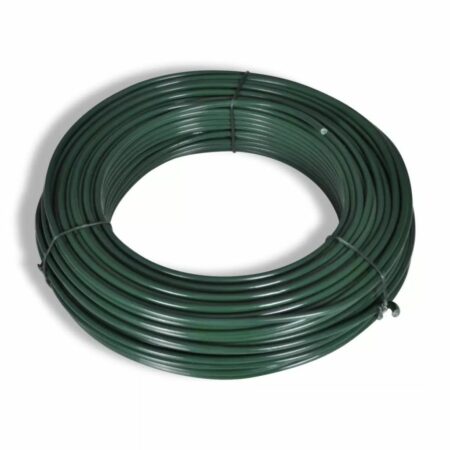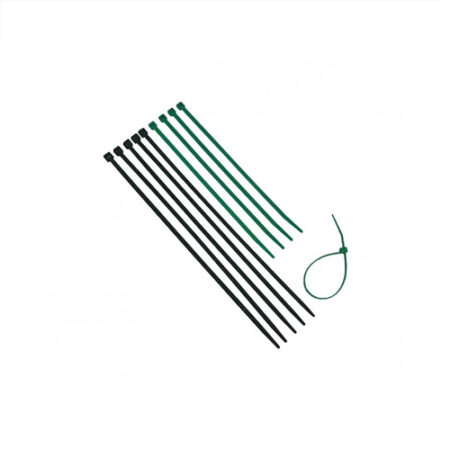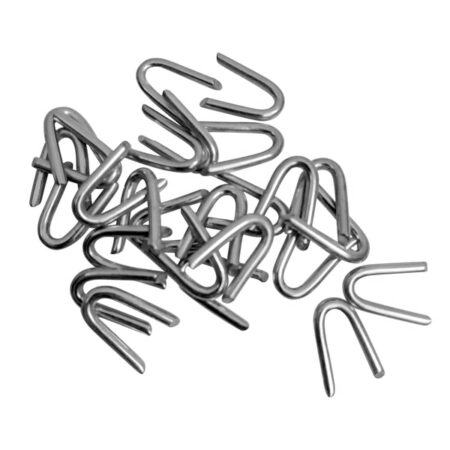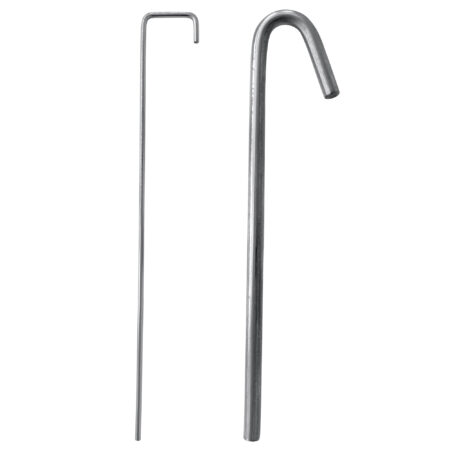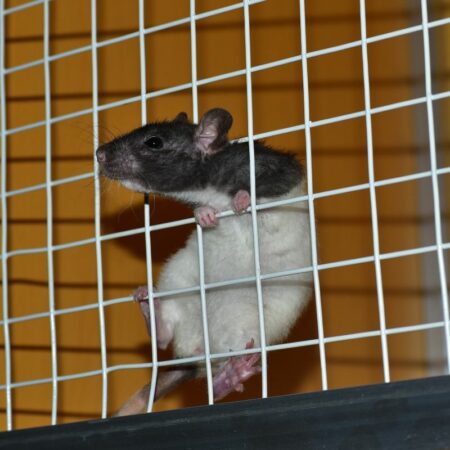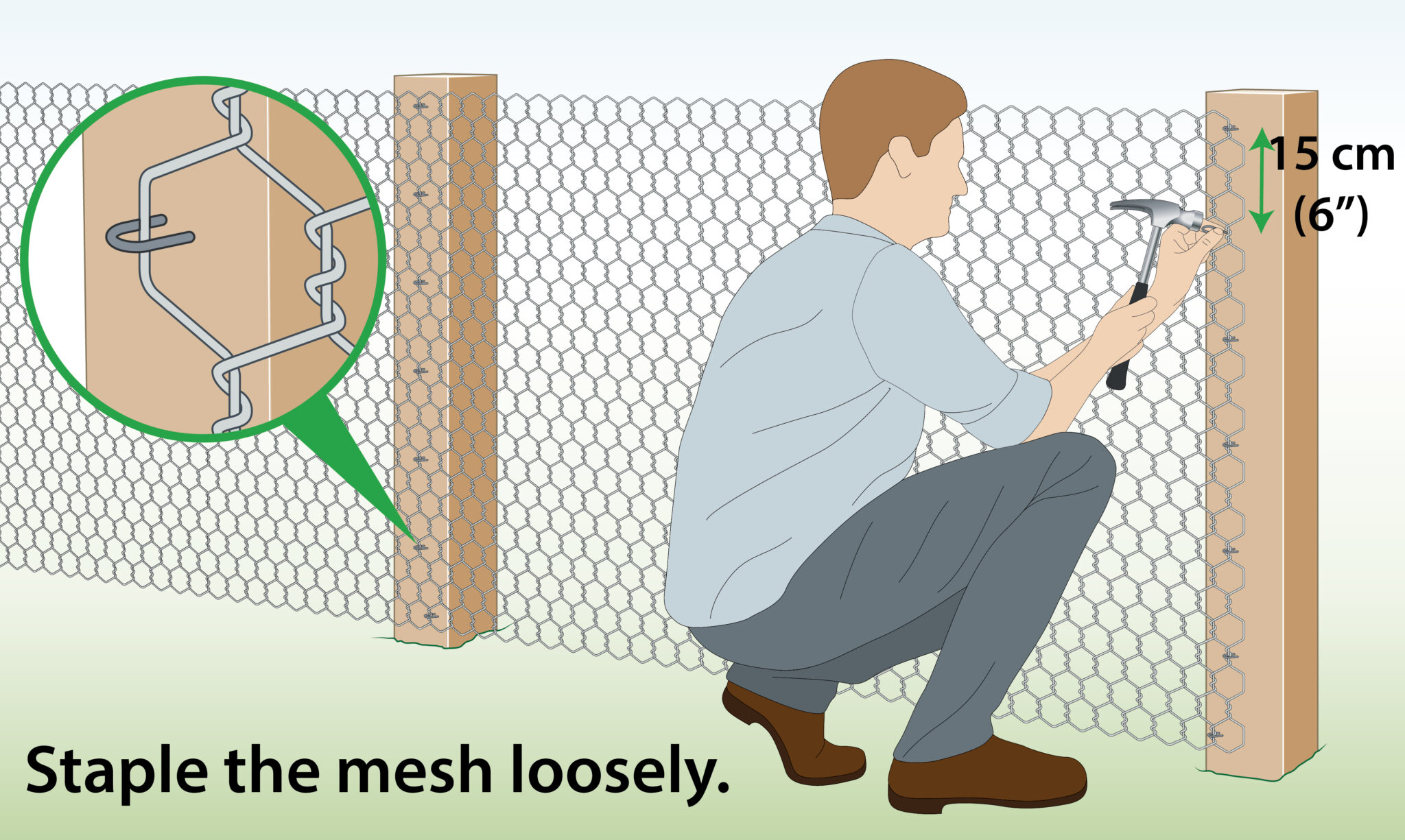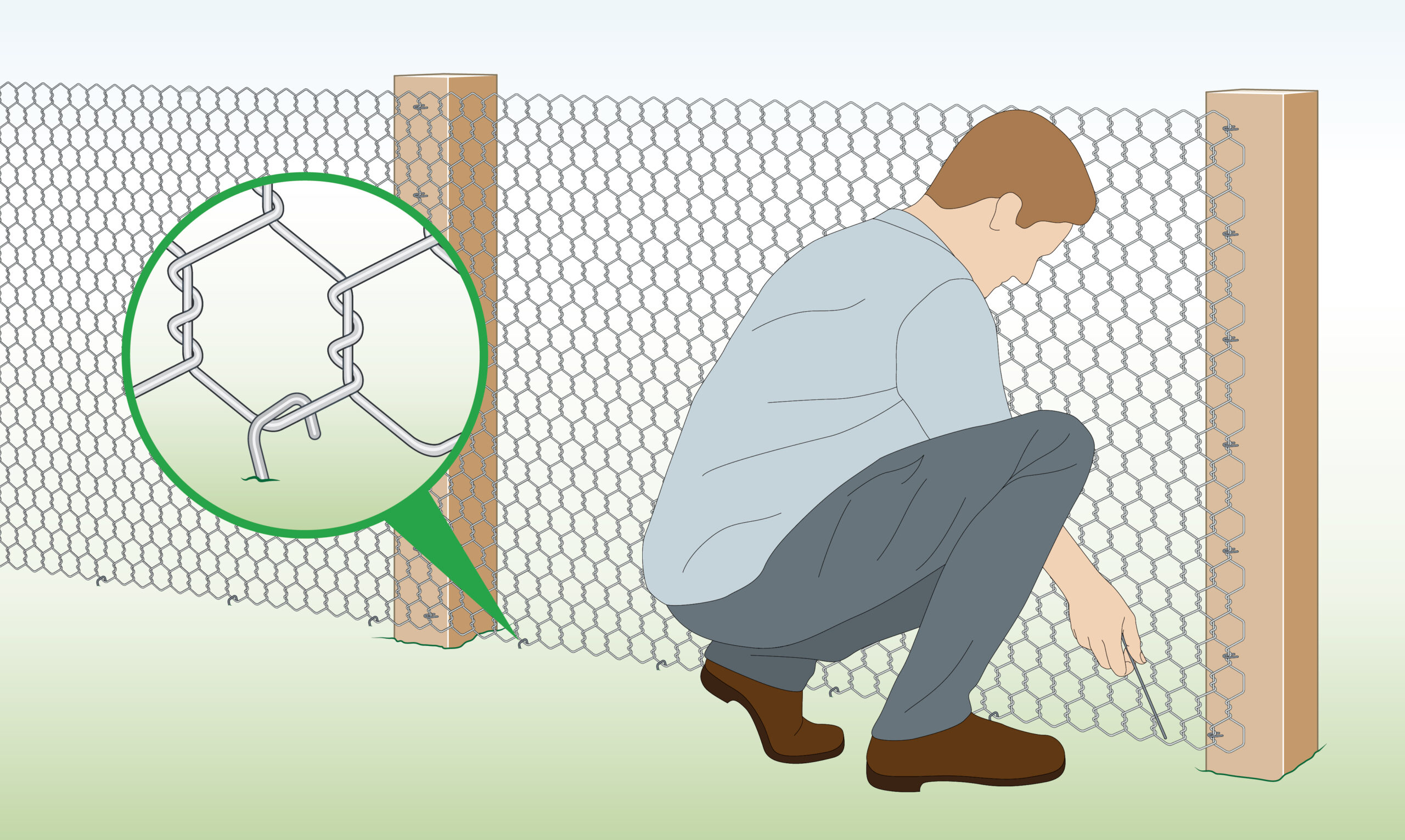Rabbit Fence & Netting
Galvanised steel wire mesh netting ideal for installing rabbit fencing or rabbit proofing an already existing fence.
Key info:
- British Standard rabbit-proof mesh size [31mm]
- Corrosion and rust-resistant
- Provided as a roll and simply unravelled
- Lightweight and flexible
- Easily cut and bent to shape

Product Selection
| Option | Application |
| 60 cm height | Ideal to use at the bottom of an existing fence. |
| 105 cm height | The industry standard for a standalone fence |
| 19g (1mm wire thickness) | Standard protection against rabbits |
| 16g (1.6mm wire thickness) | Extra strong protection against particularly determined rabbits |
Properties
| Property | Description |
| Material & Construction | Galvanised steel, hexagonal fencing mesh. Hot dipped in protective zinc coating |
| Appearance | Hexagonal apertures. Metallic grey, silver look |
| Handling | Lightweight & malleable. Easy to cut & shape |
| Biodegradable | No |
| Protecting exposed steel | Rust may occur where new cuts are made if untreated steel is exposed. Protect with galvanised spray or paint |
| Not suitable for… |
|
Attachments
| Attach to: | Attach with: |
| Wood/ Wooden Posts | Staples |
| Cable ties | |
| Soil | Pegs |
| Wire Fence | Cable ties |
Installation Instructions
Rabbits are likely to wreak havoc on your vegetable garden so you need to work towards keeping them at bay. Please see step by step instructions in the PDF section below.
| How to Install a Standalone Fence | |
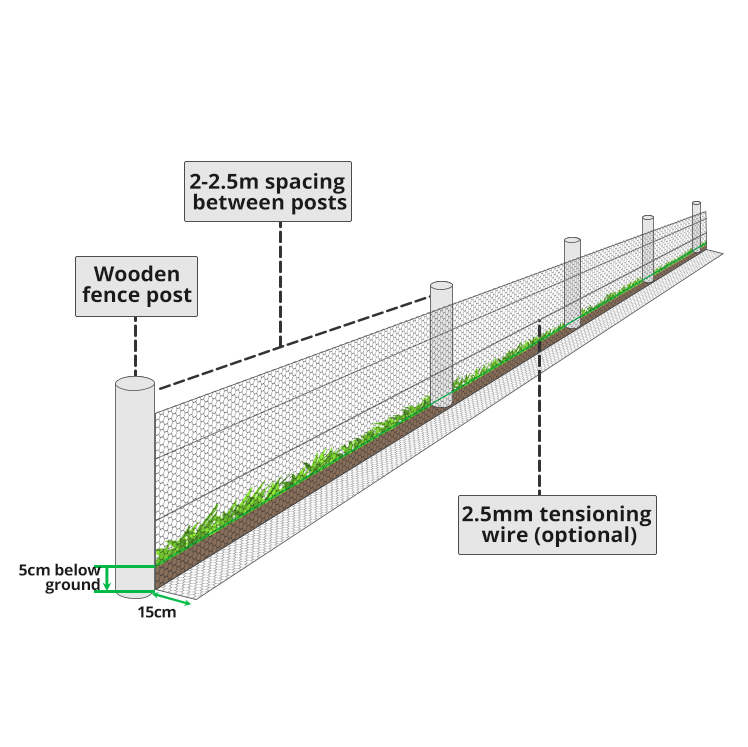 |
With T Posts
With Wooden Posts
| To Do | Explanation |
|
Step 1 – Mark Area
|
Mark a straight line at each end between the two posts for the fence. |
|
Step 2 – Measure Post Distance
|
Indicate the post locations 2-3m apart using a tape measure.
Shorten the distance between your fence posts to enhance stability. |
|
Step 3 – Install End Posts
|
By using a post driver or mallet, drive the end posts 50cm into the ground.
To maintain consistent alignment, ensure that the holes of the posts face each other. |
|
Step 4 – Check for Same Height
|
Secure a piece of string between the end posts, then use a tape measure to verify that they have been installed at the same height. |
|
Step 5 – Check for Straightness
|
Use a spirit level to ensure that the posts have been installed straight. |
|
Step 6 – Set in Concrete (Optional)
|
For a sturdier and more secure fence, dig a hole and set your posts in concrete by pouring cement for the post to rest in. |
|
Step 7 – Install Middle Posts
|
For middle post installation, repeat steps 3-5.
Ensure that the posts are facing in the same direction and have been installed both straight and at the equal height.
For additional strength, you can also secure the middle posts with concrete. |
|
Step 8 – Install Tension Wire (Optional)
|
When using a light weight mesh, you may want to attach a tension wire between the end posts to prevent any potential sagging.
Wrap the tension wire around the end post’s hole, and use a plier to secure it by twisting the wire’s end. |
|
Step 9 – Dig a Trench
|
Dig a trench along your fence line for the netting at a depth of 5cm. |
|
Step 10 – Secure Mesh to End Post
|
Fasten the mesh to the end post with cable ties that can be threaded through the pre-drilled holes in the post.
|
|
Step 11 – Bend the Mesh
|
Fold the bottom of the mesh at a 90-degree angle to form a 15cm lip.
This extension will cover the trench’s bottom on the outside of your fence. |
|
Step 12 – Pull Tight
|
Pull the mesh tight and then fasten it to the second post using cable ties. Be careful not to over-tighten.
Repeat this procedure until you reach the end post. |
|
Step 13 – Secure to Tension Wire (Optional)
|
In case you’ve installed a tension wire, use cable ties to secure the mesh to it, leaving about 30-45 cm between each tie. |
|
Step 14 – Secure the Flap
|
Use pegs to secure the flap to the ground.
Staple it at the 90-degree angle and also at the outer edge of the lip, repeating this every 60cm. |
|
Step 15 – Cover the Trench
|
Cover the outer flap by adding a layer of 5cm of soil or mulch over it.
Optional Add a layer of concrete into the trench to provide extra security against digging. |
Attachments
| Attach to: | How to: |
| Wood/ Wooden Posts (Staples) |
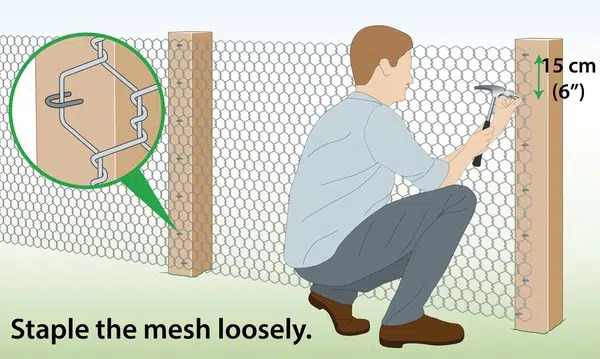 |
| Metal/ Metal Posts |
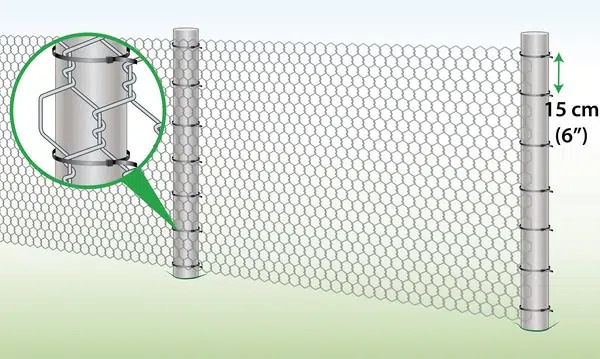 |
|
Soil (Pegs) |
 |
|
Wire Fence |
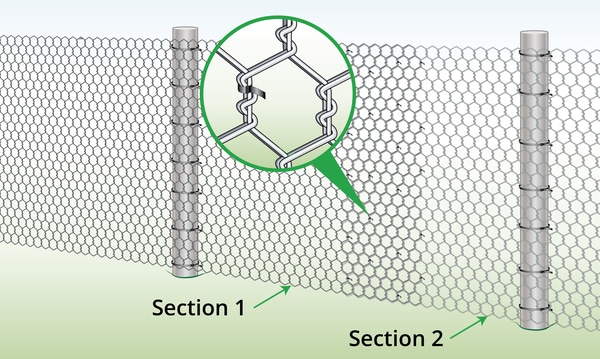 |
FAQs
How can I cut it?
The mesh is relatively easy to handle. However, we would recommend that you use side cutters and wear gloves to protect your hands.
Will I be able to shape it?
This mesh is not very rigid, so you will be able to shape it fairly easily into a tunnel, around a tree or any area that you want to protect from smaller animals.
Does it contain lead, will it contaminate the soil?
The galvanized coating is made of high purity grade zinc so you don’t have to worry – the netting will not contaminate the soil when coming in contact with it.
Common Uses
- Rabbit fence
- Rabbit runs
- Chicken coops
- Animal runs and enclosures
- Boundary fencing
- Tree guards/protecting trees from browsing animals
- Plastering and rendering support
- Insulation support between joists
- Garden fencing
- Plant climbing and support
- Vegetable beds protection


